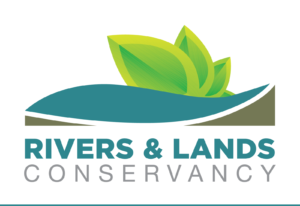
Integrated Pest Management defends SoCal native habitats from the threat of invasive plants.
Here in southern California, we are fortunate to be a short drive from a diverse array of landscapes. We have it all, from coastal sage scrub, riparian streams, alpine forests and inland deserts. Unfortunately, invasive non-native species put our natural open spaces at risk.
Invasive plants, like Stinknet, which was covered in our last column, are those that are non-native to a habitat yet can quickly establish and spread. They are fierce competitors and can often grow quicker, more densely, and with less opposition than our native species. Their prolific seed production paired with the ability to grow in a new region without their natural predators lends to increased wildfire danger and habitat loss. Weed control should no longer be seen as just a home chore, but a community-wide issue with large implications for our public safety and ecological health.
It’s not all doom and gloom though. Professionals are cooperating in a concerted effort to control invasive plant populations with the principles of Integrated Pest Management, or “IPM.” The IPM approach blends principles in science, technology, and can even include community involvement.
When treating weeds with an IPM mindset, there are four main approaches. Mechanical removal employs tools or hands, such as mowing or hand pulling weeds. Biological control introduces natural predators of the invasive species to the infested area to reduce their population. Cultural control creates an environment where the invasive plant does not thrive, such as mulching and choosing appropriate plants to maintain the integrity of the site. After all other methods are exhausted, chemical control via herbicides can be applied to control an infestation. Licensed applicators carefully plan to ensure the herbicide is only targeting the weed, abide by regulations preventing over-application and ecological impacts, and minimize risks to human and environmental health.
Monitoring invasive species populations can help us determine how we should address them. Variables like the species, population size, and time of year will help determine a unique prescription and assess level of importance. Different weeds bring varying levels of harm to the environment, economy, and human health.
For weeds that are new to the area, the “Early Detection and Rapid Response” (EDRR) method is the way to go. This calls for timely identification and action before the plant can establish its next generation of offspring. Larger established populations can take years to control. Adaptive management can be used by monitoring the effects of actions taken, and using the lessons learned from past efforts to guide future treatments.
We can prevent spreading invasive plants altogether by not planting invasive non-native species, cleaning agricultural equipment before transporting, removing garden weeds before they go to seed, and cleaning our shoes before and after hiking to reduce spreading seeds.
Community engagement is also essential. The public should be provided opportunities to become more educated about the threats posed by invasive plants. Local conservation organizations like Rivers & Lands Conservancy often provide volunteer opportunities for the community to participate in local conservation projects. Gaining firsthand experience in identification and removal of invasive species, volunteers can apply their new knowledge to their own home and garden.
If you missed our previous events and would like to join our fight to restore our native habitat and open spaces, check our website for future volunteer opportunities.
Using IPM for invasive plant control can create and enhance habitats for native plants to thrive. A healthy, robust, and biodiverse landscape not only brings birds and other wildlife that rely on native vegetation, but also keeps our ecosystem resilient and balanced to ensure these beautiful landscapes for our next generations to enjoy.
Amy Tims is a land steward with Rivers & Lands Conservancy and has a B.S. in wildlife, fish & conservation biology from UC Davis.
Rivers & Lands Conservancy connects our community to natural, wild, and open spaces of Southern California through land conservation, stewardship, and education.


